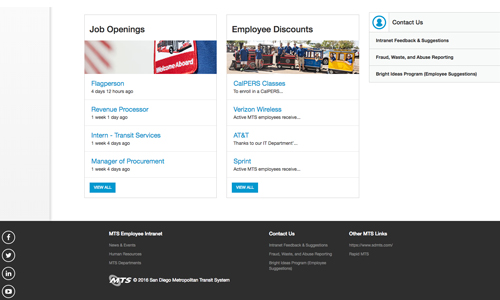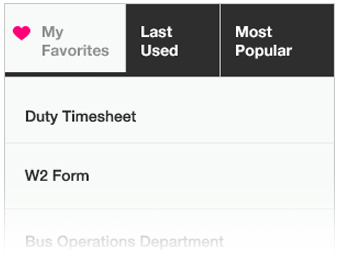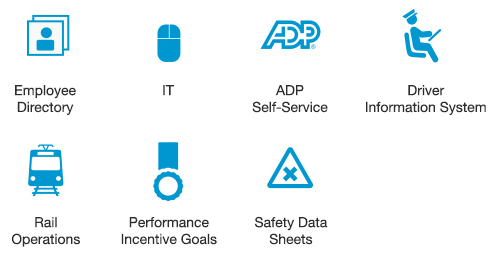You are here
MTS Bus Control Center: Emergency Room Specialists
The furious pace at which MTS Bus Control Center employees tend to their craft is remarkable to watch.
We all have days where triage is needed to urgently take care of an issue. But day-in and day-out, the MTS Bus Control Center is hub of activity and the employees here talk fast and work even faster. “There are six supervisors in here responsible for 500 buses on the road at 11 a.m. A lot happens on the road every day, but we patch stuff up and keep the buses running,” said Communications Supervisor Ismael Yeo, who has been with MTS for 21 years.
MTS Bus Control Center Supervisors handle about 200 incidents per day for buses out of South Bay, East County, KMD and IAD. The control room sits on the second floor at IAD. Supervising the bus movement takes two simple and effective components: (1) real-time communication and (2) technology.
Real-time communication: On this particular day, sounds similar to doctors and nurses in an ER fill the room with constant chattering between Yeo, and Communication Supervisors Edwin Molinary and Todd Boardman when a pepper spraying incident is reported on Rapid 235. All three are working different communication channels (radio, telephone, email) and simultaneously telling each other the actions being taken. One is calling the police, another calling medical, while a third is on the radio to the Road Supervisor, asking him to take bottled water to the scene. It’s a symphony of telephone rings, voices and radio chimes for about five minutes. As the situation plays out and the tension subsides, Yeo mentions that with this job, “you just have to be ready to take it head on. It’s always a challenge and you don’t know what will come next.”
Technology: MTS recently integrated control center rooms with Transdev at IAD to streamline communication and speed up joint responses. Previously, Transdev was offsite, which added a layer to the response process when police called or when bus bridges were needed. All teams and bus fleet tracking systems are now connected through a GPS-based system called RTMS. To manage the communication and technology, five computer screens surround each supervisor’s station illuminating important information about incidents, on-time performance, GPS maps showing all in-service buses on routes and each driver’s scheduling information for the day’s runs. From this seat, each supervisor will orchestrate responses between bus operators, road supervisors and other entities – like maintenance technicians, fire, or police to get to the scene. But even the best technology and computer programs on the market can’t prevent all the issues that arise on the road. The incidents come in all forms, including minor mechanical issues on the bus, road closures and passenger slip-and-falls. “Sometimes it just snowballs,” said Todd Boardman, five-year veteran of the control center and former bus operator. “But we are always looking to maintain timely service.” To get the buses back on time when an incident occurs, communication supervisors have the option of activating a standby bus. “When a bus is two to three minutes behind, that’s relatively okay. When the bus gets to 10 to 15 minutes late, that when passengers will start missing connections and we will look at pulling in a standby bus,” he added.
With the real-time communication between MTS and Transdev, and improved technology features, the MTS Bus Control Center team is even more prepared to handle the toughest incidents. The fast pace work in the control center has its challenges but the strong communication chain helps keep our system running smoothly and safely.

 Employee Directory
Employee Directory IT Help Desk
IT Help Desk ADP Self-Service
ADP Self-Service Driver Information System
Driver Information System Bus Operations
Bus Operations Rail Operations
Rail Operations Performance Incentive Program
Performance Incentive Program Safety Data Sheets
Safety Data Sheets








